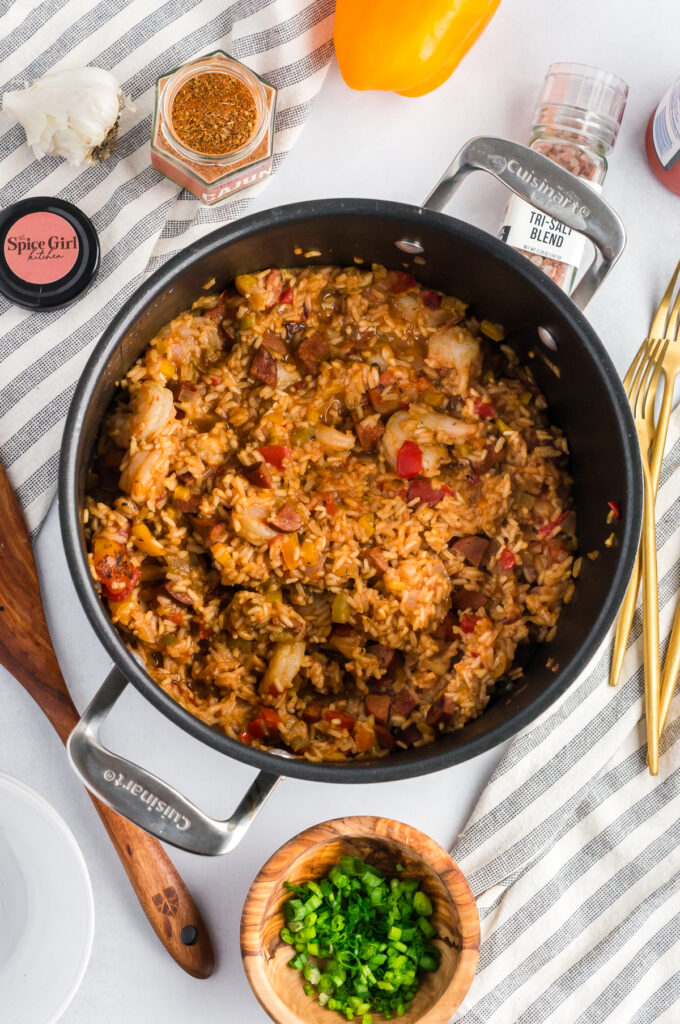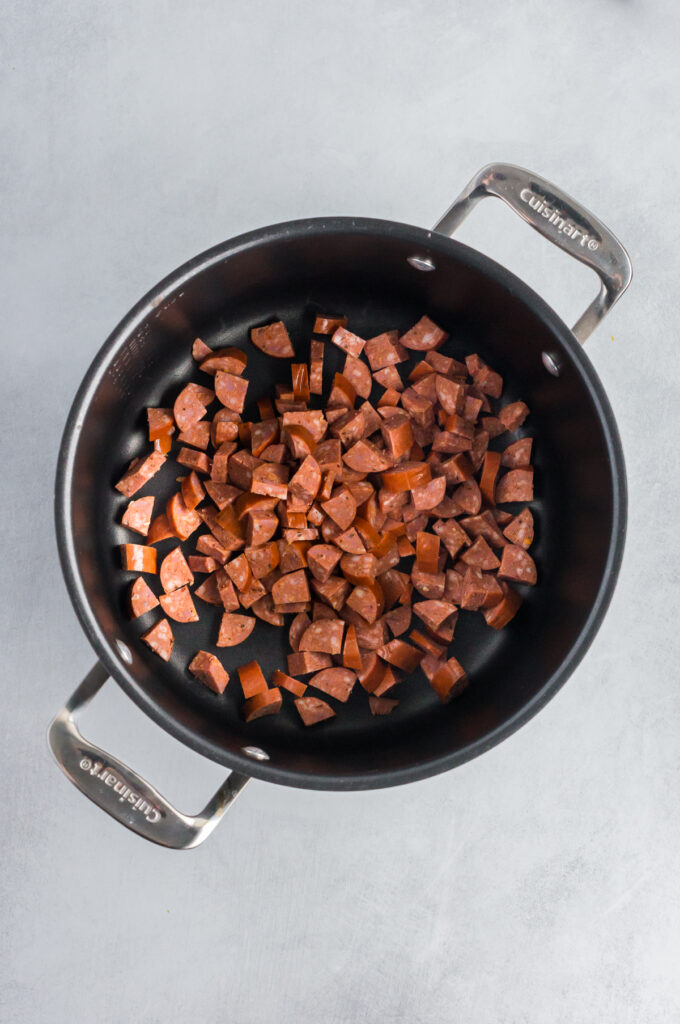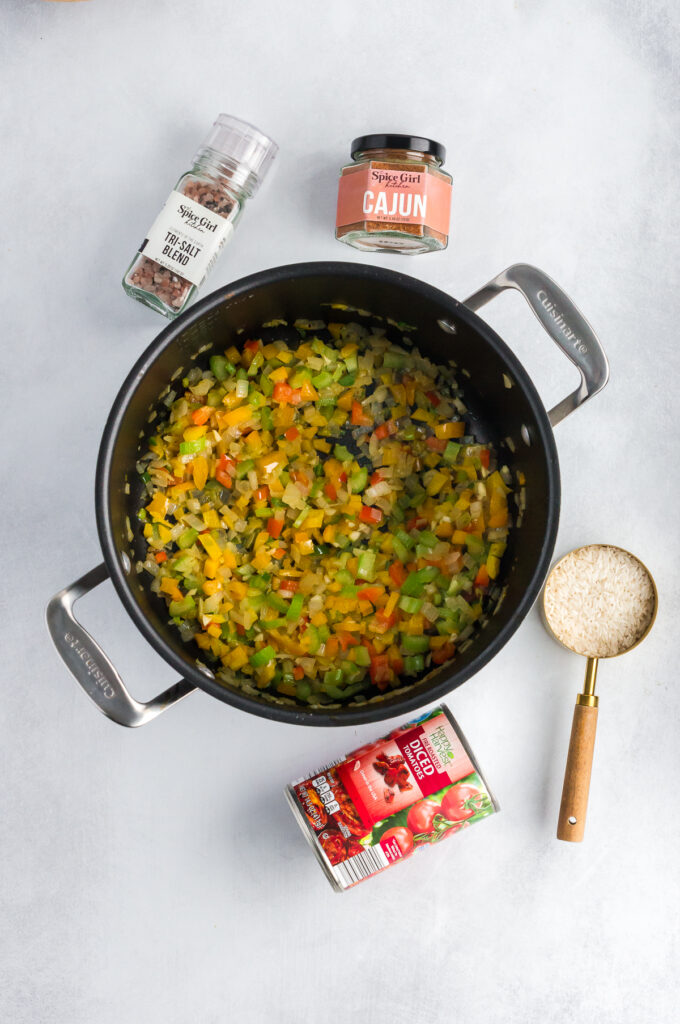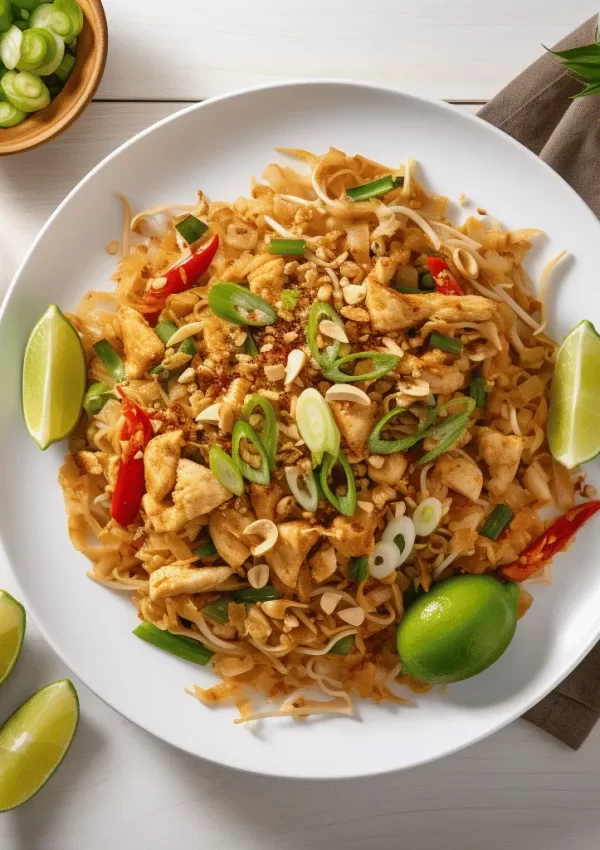One-pot recipes are the best for busy weeknight dinners and this one-pot jambalaya recipe is a frequent flyer in our household. It’s veggie-packed with minimal cleanup. Need I say more?!
If you are anything like me, your weeknights are busy. You need quick, easy & flavorful recipes that will fill the bellies and satisfy the tastebuds of the whole family while leaving you with minimal cleanup at the end. Lucky for you, my one-pot jambalaya recipe checks all those boxes.
You can be assured that this recipe is authentic because it’s coming from a true Cajun woman. I grew up in New Orleans and lived there for 22 years before moving to OKC. When it comes to cajun cooking, I definitely know what I’m talking about.
In this recipe, I use my salt-free cajun blend from my spice company – The Spice Girl Kitchen. I’m completely biased because it is, after all, my own spice recipe and the best salt-free cajun spice on the market. But feel free to use whatever cajun blend you have on hand.
Get ready for the newest addition to your rolodex of best weeknight dinner recipes. But before we dive into the sausage & shrimp (get it? like meat & potatoes) of this post, let’s chat about the history of Cajun and Creole cooking.
This post is all about the best one-pot jambalaya recipe.
Creole Vs. Cajun Cooking
Have you ever wondered what the difference is between creole and cajun cooking? I sure did. Even though I grew up in NOLA, it was never clear what the difference was. The two seemed to be used interchangeably despite many differences between these two distinct cultures.
It has been said that a Cajun can feed three families off of one chicken while a Creole can feed one family off of three chickens. This is because the Cajuns were very resourceful, generally cooked meals in one large pot, didn’t have access to many luxuries, and lived off the land as it changed according to the season. The Creoles had many amenities, servants who made the food, access to local markets, and a wealthy city lifestyle.
1. Cajun
The word Cajun originates from the term les Acadians. This term described the French colonists who settled in the Acadia region of Canada. The Acadians were forced out of their Canadian homes in the early 1700s during the British conquest of Acadia. Many Acadians settled in the swampy region of Louisiana, which is present-day Acadiana.
The Acadians created a unique cuisine by using their resources wisely. They took full advantage of the swamps, bayous, and wild game. The Cajuns lacked refrigerators, which forced them to find other ways to use and preserve every bit of their slaughtered animals.
They would put pig liver in the Boudin and use salt and smoke to preserve the Tasso and Andouille. They were also short on the luxury of time, so their cooking was mainly done in one big pot full of lots of spice and local seasonal ingredients (so you can thank the Cajuns for crawfish boils!). The Cajun social culture was largely based on preparing, sharing, and enjoying food with others. Cajun food was simply known as “country food” since the Acadians were located in the rural areas of southern Louisiana.
When most people think “Cajun,” they think spice. But Cajun food is much more than just a lot of cayenne pepper. The base of most Cajun dishes begins with “the holy trinity of Cajun cuisine”, which uses onion, celery, and bell pepper rather than carrots like in the French mirepoix. Some other Cajun spice necessities include garlic, paprika, thyme, parsley, filé (ground sassafras leaves), and green onions.
2. Creole
Creole refers to the original European settlers of New Orleans. These were mainly wealthy families that were French or Spanish and had the means to hire chefs from Madrid and Paris. The term Creole also grew to include native-born slaves and free people of color.
Creole cooking is more refined, delicate, and luxurious. In the early days, the slaves of these wealthy people would have an abundance of time and an array of resources to prepare meals. The emphasis is less on spices like cayenne pepper and filé powder and more on cream, butter, tomatoes, and herbs. Therefore, Creole cooking resulted in rich, time-intensive soups and sauces, elegant pureed bisques, and desserts. For example, a remoulade sauce consists of over a dozen ingredients, which would not exist in a Cajun kitchen.
The Creoles had access to what were considered exotic ingredients at the time – like tomatoes and dairy. This is why a Creole roux is made with butter and flour, while a Cajun roux is made with oil and flour. This is also why Creole jambalaya contains tomatoes while Cajun jambalaya does not. The Creole gumbo has more of a tomato base while Cajun gumbo has a roux base.
The recipe below is considered a creole jambalaya simply because it has tomatoes and butter in it. Interesting, right?!
What Should You Serve with Jambalaya?
When I put my dietitian cap on, jambalaya is already a complete meal because you have your protein, starchy carbs, fats, and veggies all in one. So, you technically don’t have to serve anything with it!
However, if you are interested in adding something else to the meal, I would suggest starting with:
- a simple salad
- jalapeno cornbread
- iced tea
- lemonade
- Arnold Palmers (iced tea + lemonade)
- dry white wine
- fresh fruit
- hushpuppies
How To Make Jambalaya Step-By-Step
Mis En Place
Gather all of your ingredients and prep them.

Brown The Sausage
Heat the olive oil in a stock pot over medium-high heat. Add in andouille sausage and saute for 5 minutes or until the sausage is slightly browned. Remove with a slotted spoon and set aside on a clean plate.
Soften the Vegetables
Reduce heat to medium and add the butter to the same pot. Once the butter is melted, add the whites of the green onions, white onion, celery, bell peppers, and jalapeno. Sautee for 5-7 minutes, or until onions are soft. Then, add in garlic and saute for 1 additional minute.
Add liquid ingredients, rice, and seasoning
Next, add the fire-roasted tomatoes, chicken broth, rice, cajun spice, & salt. Stir to combine. Bring mixture to a boil, stirring frequently so the rice does not settle to the bottom. Cover, reduce heat to medium-low, and simmer for about 15 minutes or until most of the liquid is absorbed and the rice is almost cooked through. Stir frequently, ensuring the rice is not sticking to the bottom.
Add sausage & Shrimp
Add in the gulf shrimp and sausage and stir again. Re-cover and continue simmering until shrimp is cooked through. This should take about 5 minutes. The shrimp will appear curled, pink, and no longer transparent and the internal temperature should be 145 ℉.
Storage & Reheating
Since jambalaya is a well-balanced meal by itself, it makes a great meal prep option! It reheats well during the week and tastes equally as good the second time. Reheat it in the microwave for a single serving or over low heat on the stove, ensuring it stays covered so it doesn’t dry out! You can also warm it in the oven in a covered casserole dish when prepping for a dinner party.
Store in the refrigerator in an air-tight container for up to 3 days or freeze it for up to 3 months! Without further ado, let’s jump into this quick & easy one-pot jambalaya recipe!

Shrimp & Sausage One Pot Jambalaya
Ingredients
Method
- Heat the olive oil in a stock pot over medium-high heat. Add in andouille sausage and saute for 5 minutes or until the sausage is slightly browned. Remove with a slotted spoon and set aside on a clean plate.
- Reduce heat to medium and add the butter to the same pot. Once the butter is melted, add the whites of the green onions, white onion, celery, bell peppers, and jalapeno. Sautee for 5-7 minutes, or until onions are soft. Add in garlic and saute for 1 additional minute.
- Add the fire-roasted tomatoes, chicken broth, rice, cajun spice, & salt. Stir to combine. Bring mixture to a boil, stirring frequently so the rice does not settle to the bottom. Cover, reduce heat to medium-low, and simmer for about 15 minutes or until most of the liquid is absorbed and the rice is almost cooked through. Stir frequently, ensuring the rice is not sticking to the bottom.
- Add in the gulf shrimp and sausage and stir again. Re-cover and continue simmering until shrimp is cooked through. This should take about 5 minutes. The shrimp will appear curled, pink, and no longer transparent and the internal temperature should be 145 ℉.
- Remove from heat. Allow 5 minutes to cool before serving. Serve warm. Garnish with the green parts of the green onion. Enjoy!
Video
Notes
- Jambalaya typically has at least 1-2 protein sources. The most commonly used protein sources are sausage, shrimp & chicken. Feel free to customize your protein by adding in chicken or doing a different combination of proteins.
- Store in an airtight container in the refrigerator for 3 days or in the freezer for up to 3 months.
- If the recipe is too spicy, reduce the amount of spice used or omit the jalapeno. If you wish for more kick, include the seeds from the jalapeno or increase the number of jalapenos or the amount of the spice blend used.
- Feel free to use frozen shrimp! Just be sure that you thaw it beforehand and double-check that you purchase raw shrimp (not pre-cooked shrimp). I prefer large gulf shrimp!
This post was all about Shrimp & Sausage One Pot Jambalaya.
Did you make this recipe? Make sure to tag me @thespicegirlkitchen_ on Instagram or @thespicegirlkitchen on TikTok! I love seeing your recreations! I will be your ultimate hype woman!










